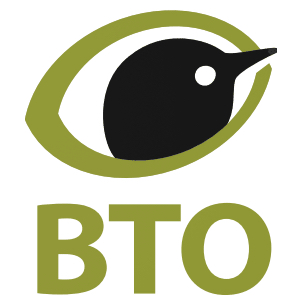As its name suggests, the great tit is our largest tit species. It weighs approximately 6g more than the willow tit and has a wingspan 5cm longer, which in the world of small songbirds, is a lot.
We may think of the great tit as very much a UK garden bird. However, it is actually the most widespread of all tit species. It is found as far away as Japan, Indonesia and North Africa. They aren’t all the same as ‘our’ great tit, as there are 14 recognised subspecies throughout its range.
Learn more about this regular garden visitor in this guide by the British Trust for Ornithology (BTO):
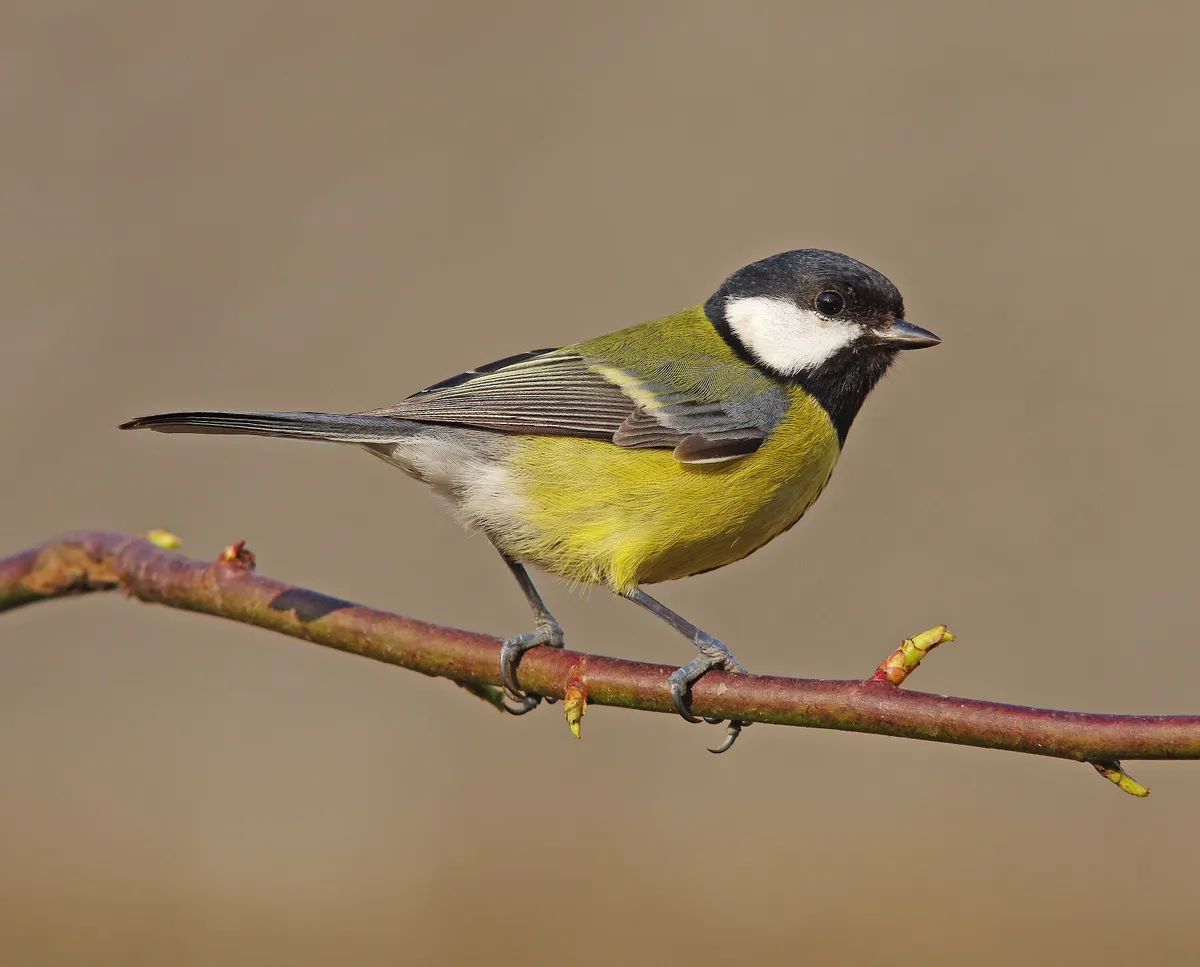
How to identify great tits
Great tits are relatively easy birds to identify, although at first glance, you may confuse them with other tits. They have a black head and chin, white cheeks and a yellow breast.
The key marking to look out is the black stripe running down their front. This is how you can identify the sex of the bird.
Adult males and females can be told apart by the width of the black stripe that runs down the centre of the chest; in females this tapers off towards the belly, while in males it broadens to a wide black patch between the legs. The bolder and wider the stripe on the male, the more dominant the bird.
Juveniles have yellow ‘wash’ over all their plumage; the cheeks are yellow rather than white, the blue of the wings is greenish.
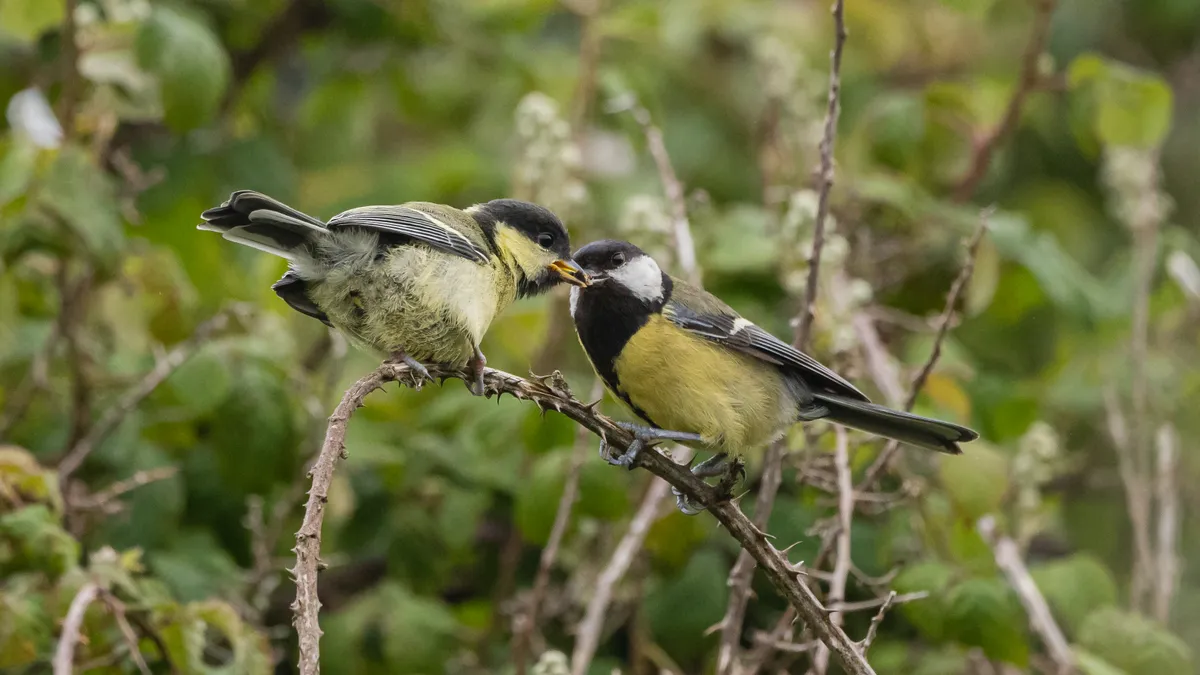
Please note that external videos may contain ads:
Identifying blue tits and great tits. © BTO
What do great tits sounds like?
The basic song of a great tit is easy to learn. You’ll hear them singing a two syllable song over and over again, often remembered as ‘tea-cher, tea-cher’.
Please note that external videos may contain ads:
#BirdSongBasics – blue tits and great tits. © BTO
It seems easy, but when you consider the fact that in a single great tit population, there will be an average of 40 different song types used throughout the year, listening out for them becomes a little trickier.
Each male has an average of four song types which can be sung at three different tempos. It’s thought that this might give the impression that the territory is more densely occupied and as a consequence discourage competitors.
Great tits with larger vocabularies are more likely to be dominant and breed successfully.
It is said amongst birders that if you don’t recognise a bird call, it’s likely to be a great tit.
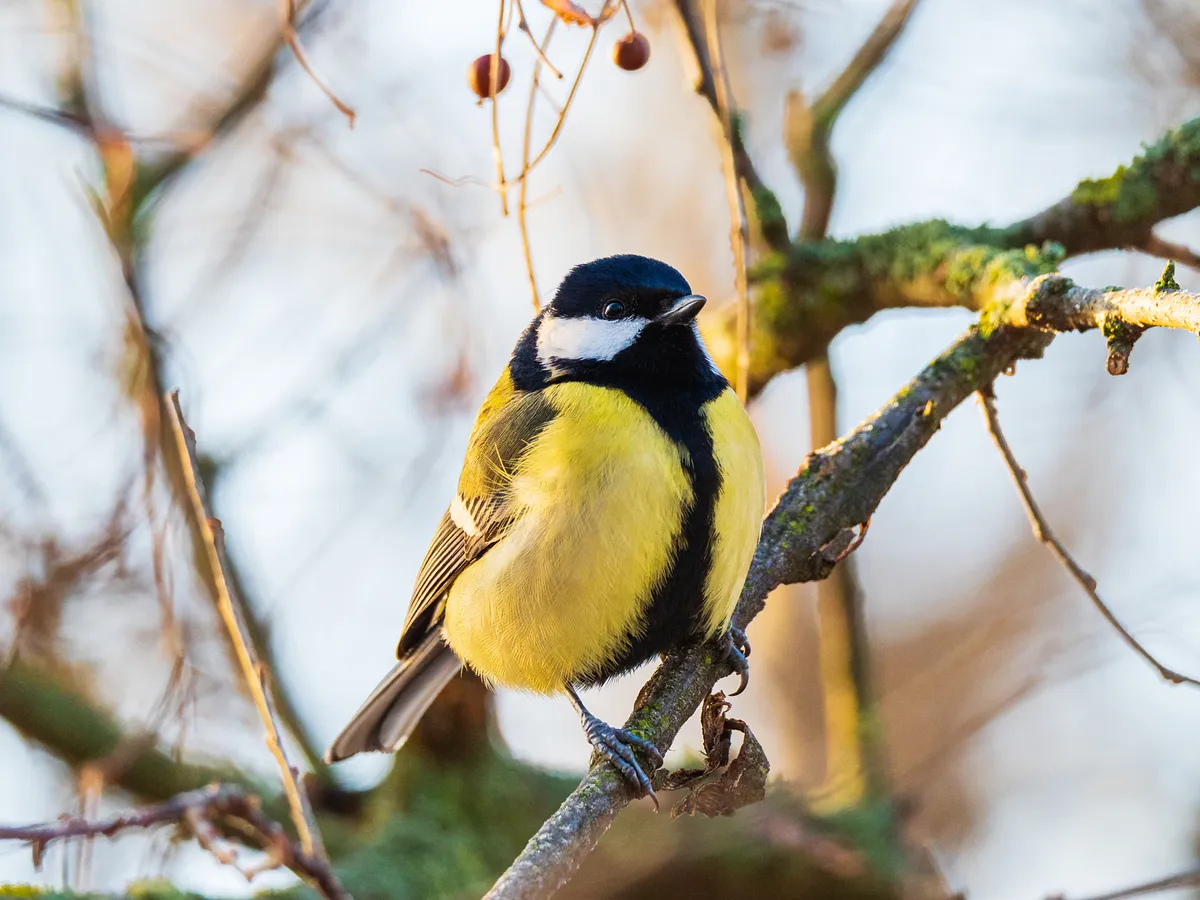
What do great tits eat?
Great tits thrive on seeds in the winter, and not just small ones. They use their feet to hold large food items such as beech mast and acorns, and then hammer them open with their bills.
The birds use a similar technique during the breeding season when their main food becomes invertebrates. They manage to eat large caterpillars by holding the middle with their feet and then eating either end before finishing the caterpillar off.
To help with the change from seed to caterpillar, the shape of great tit bills undergo a subtle change between seasons, becoming more suitable to each food type.
When feeding on caterpillars, the bills become longer and less deep and when they start to feed on seeds, the bills become shorter and deeper.
Although they rely on seeds and invertebrates, great tits can be opportunistic feeders if times are hard.
In winter, in a cave in Hungary, great tits have been shown to systematically hunt and kill hibernating pipistrelle bats. This has been linked to a scarcity of food during this cold season.
Are great tits affected by any diseases?
Sadly, great tits are very susceptible to a disease known as avian pox. This appears as a tumour-like growth mainly on the head, but also on other body parts.
Avian pox affects many species and is usually relatively mild, however the strain that affects great tits can be a lot more debilitating, impacting their ability to continue with normal life.
Thankfully, although it is horrible for individual birds, the disease does not seem to be likely to affect the population. The disease can spread between birds, via contaminated surfaces such as bird tables, or through biting insects.
What predators do great tits have in gardens?
Like many other small garden birds, the main predator of great tits in gardens is the sparrowhawk.
How many great tits are there?
According to statistics from 2016, there were 2.2 million pairs of great tits in Britain and 2.4 pairs of great tits in the UK.
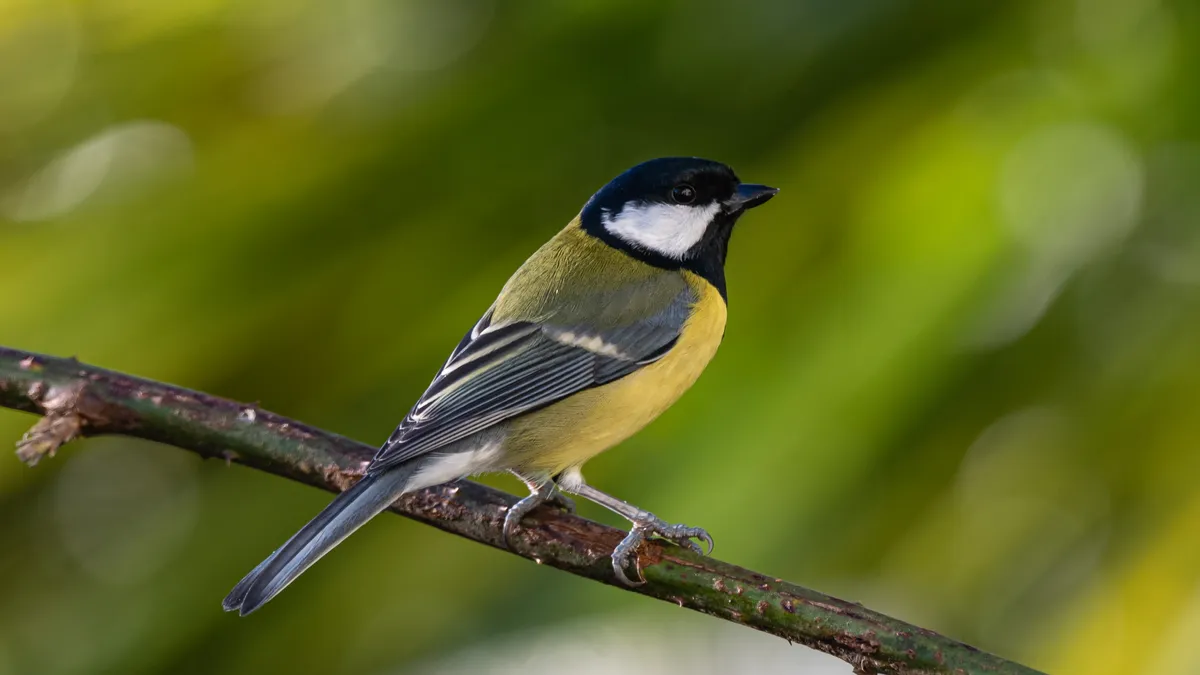
How long do great tits live for?
Great tits typically live for around three years. However, the current longevity record for this species is 13 years and 11 months.
When are great tits most frequently seen in gardens?
According to Garden BirdWatch data, which has been collected since 1995, they are most frequently seen in gardens in December, in around 80% of gardens.
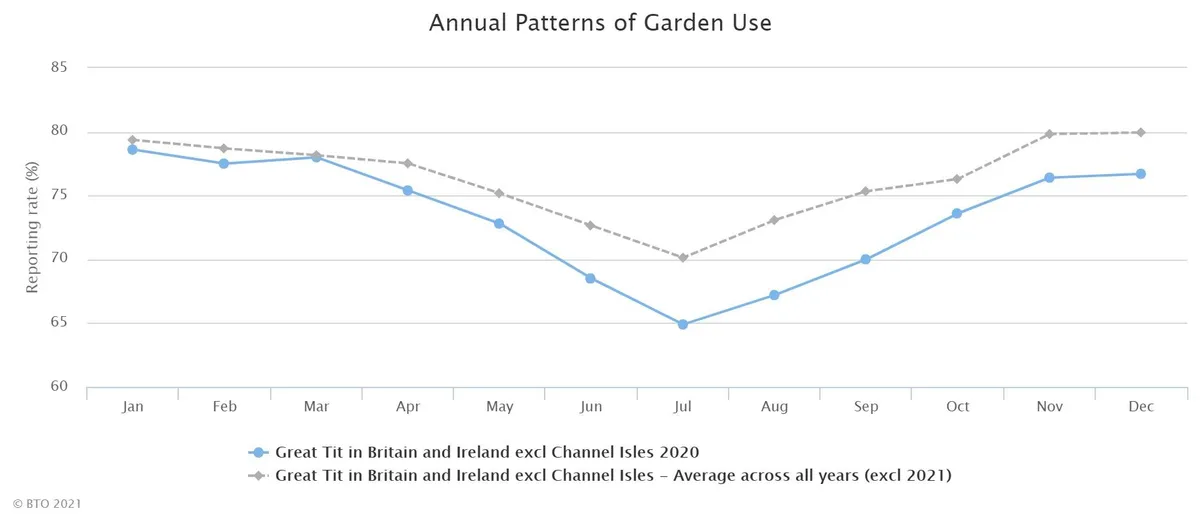
Are great tits increasing or declining in gardens?
Great tit numbers in gardens have remained fairly constant since Garden BirdWatch began. They seem to benefit from mild weather conditions. Supplementary food in gardens is also thought to have had a positive effect on their population.

When do great tits nest?
Great tits nest between April and June, and they typically have one brood a year. They lay up to nine eggs which are incubated for around 14 days.
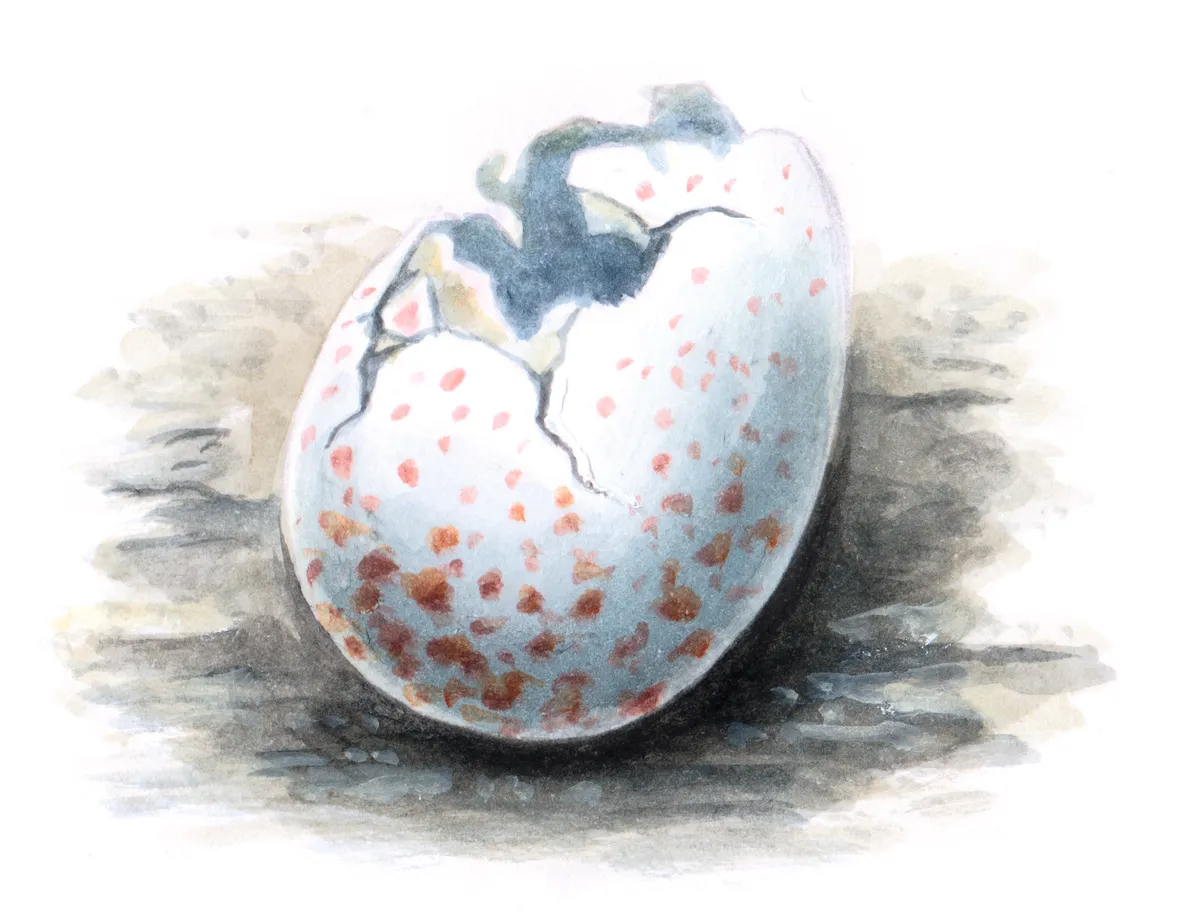
Do great tits use nestboxes?
Great tits regularly use nestboxes with an entrance hole diameter of around 40mm. Learn how to make a nestbox in this step-by-step guide.
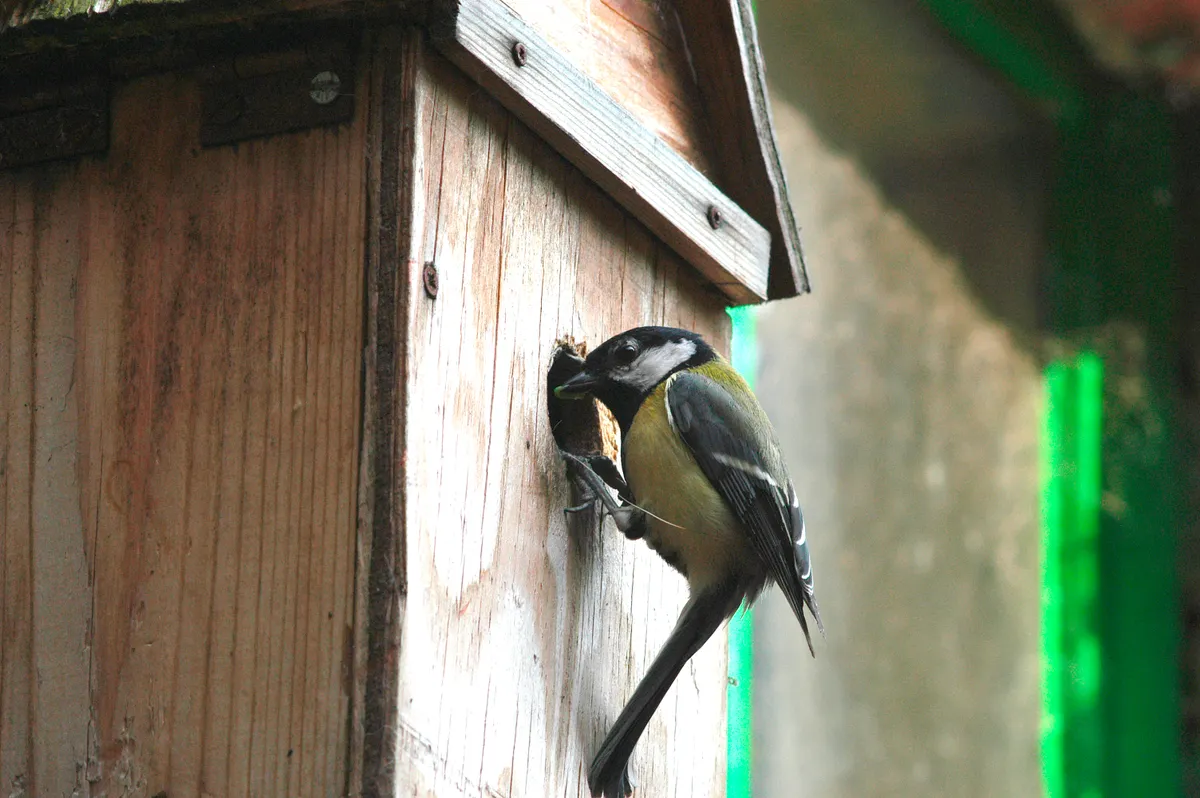
What can I do to help great tits in my garden?
You can help great tits putting feeders out, and providing fresh, clean water for them. As great tits can suffer from avian pox, which can be transmitted via contaminated surfaces, it is important to clean feeders and bird tables regularly.
What is the scientific name of the great tit?
The scientific name of the great tit is Parus major, and it is the only UK species in this genus.
Previously, many of the tits had been in the Parus genus, but they are now split into different genera within the Paridae family: coal tit (Periparus ater), crested tit (Lophophanes cristatus), marsh tit (Poecile palustris), willow tit (Poecile montanus), and blue tit (Cyanistes caeruleus).
Find out more about the BTO's Garden BirdWatch.
Main image: Great tit perched on a branch. © Sarah Kelman/BTO
